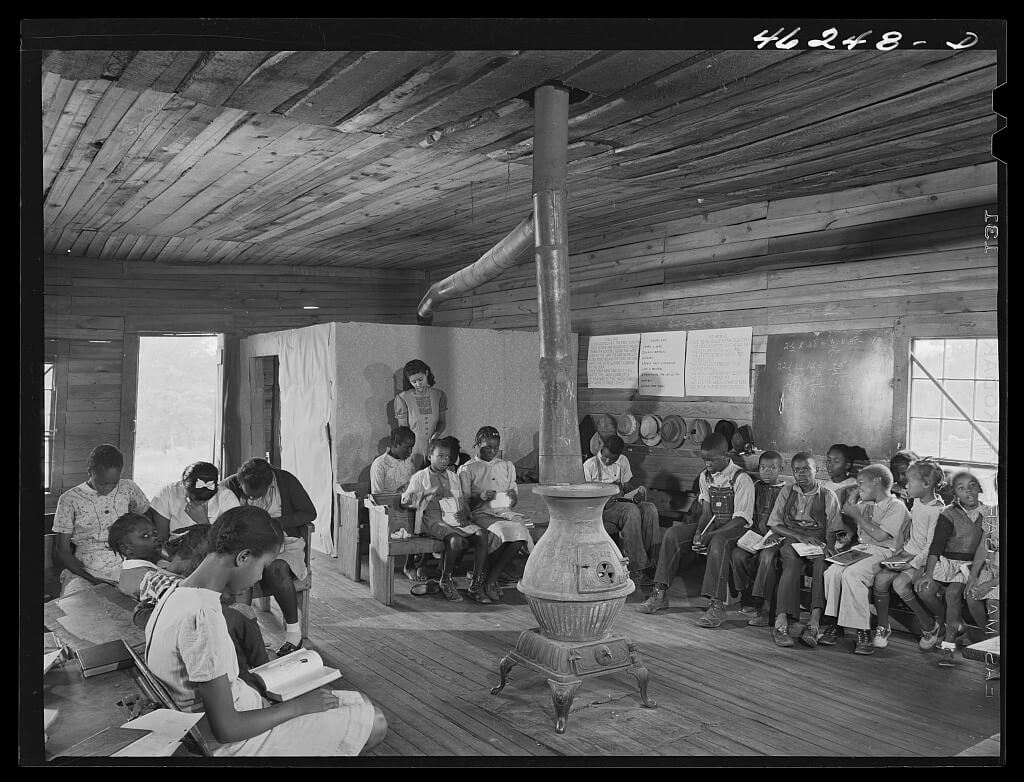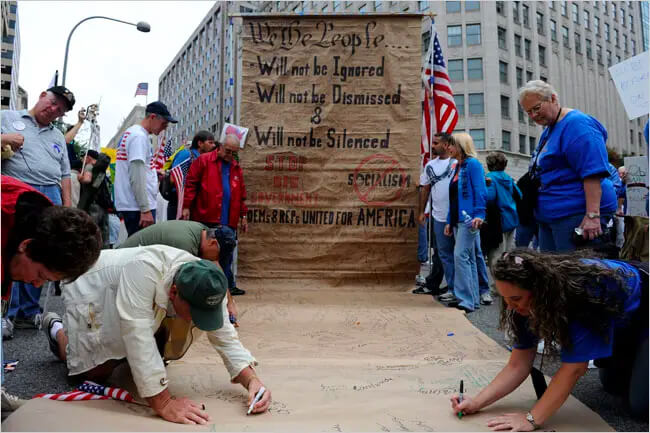Contract for the Indenture of Elizabeth Fortune, Aged 9, 1723
Contract for the Indenture of Elizabeth Fortune, Aged 9, 1723
Transcript
John Fortune and Maria his wife have by these presents put, placed, and bound their daughter Elizabeth Fortune aged nine years the first day of March last past as an apprentice with the Said Elizabeth Sharpas
as an apprentice with her, the said Elizabeth Sharpas, to dwell from the day of the date of these presents for and during the term of Nine Years…The Said Elizabeth Fortune unto according to her power, wit, and ability and honestly and obediently in all things shall behave herself towards her said Mistress and all hers and shall not contract matrimony during the said Term.
Elizabeth Sharpas for her part promises, Covenants, agrees that she the said Elizabeth Sharpas apprenticed Elizabeth Fortune in the art and skill of housewifery.
This document provides a glimpse into the experiences of colonial children who spent much of their childhood working for families that were not their own. This indenture arraignment also highlights the kinds of skills and education that were valued for girls. Namely, Elizabeth Fortune is said to receive training in the “art of housewifery” in exchange for her service.
Needlework by Sarah Anne Janeway, 1783 - Training for domestic work
Sewn Sampler made by 11-year-old Sarah Anne Janeway, 1783
Young colonial girls raised in wealthy households were trained in the skills of a housewife early on. Samplers like this one displayed a girl's aptitude for needlework and could be hung as a piece of art in a family household.
A New England Primer, 1803 - The role of religion in education
In colonial New England, a primer like this one may have been in use as early as 1690. Children first learned their ABCs and basic literacy through primers. Since the Bible was seen as the primary means through which a child would attain literacy, these primers would often incorporate religious themes and morals.
CiteWestminster Assembly. “The New-England primer,” Boston: Printed for and sold by A. Ellison, in Seven-Star Lane, 1773. Pdf. Retrieved from the Library of Congress, <www.loc.gov/item/22023945/>. Accessed April 1, 2022.
Perry Lewis (b. 1850), formerly enslaved, recounts his childhood in Baltimore, M.D. - Enslaved children and lack of access to education
Perry Lewis (b. 1850), formerly enslaved, recounts his childhood in Baltimore, M.D.
Transcript
As you know the mother was the owner of the children that she brought into the world Mother being a slave made me a slave. She cooked and worked on the farm, ate whatever was in the farmhouse and did her share of work to keep and maintain the Tolsons.
They being poor, not having a large place or a number of slaves to increase their wealth, made them little above the free colored people and with no knowledge, they could not teach me or anyone else to read…
In my childhood days, I played marbles, this was the only game I remember playing. As I was on a small farm, we did not come in contact much with other children and heard no childrens’ songs. I therefore do not recall the songs we sang.
Records from the Federal Writers Project are of immense importance in documenting and preserving the experiences of those who survived enslavement. ; Lewis’ account includes reference to the concept of hypodescent, which allowed intergenerational, chattel slavery to persist in the U.S. Lewis also makes note of his lack of access to education and some memories of his childhood.
CiteFederal Writers' Project: Slave Narrative Project, Vol. 8, Maryland, Brooks-Williams. 1936. Manuscript/Mixed Material. Retrieved from the Library of Congress, <www.loc.gov/item/mesn080/>. Accessed April 2, 2022.
Before and After Photos of Children enrolled in Carlilse Residential Indian School, 1890s - Residential School System
One of the “before-and-after-education” photographs of Sioux boys taken before arriving at boarding school in the 1890s.
At Carlisle Indian School in Pennsylvania, and other residential schools like it, Native American children and teens were required to give up their tribal traditions and culture. Carlisle opened in 1879 as the first government-run residential school, aimed at forcing Indigenous youth to assimilate to White culture. These before and after photos were taken as a way to demonstrate the efforts at assimilation.
Sample Program For One Week - Residential School System
Sample daily program for one week at an Indian school, 1914
Life for a student at the Carlisle Indian School was highly regimented and militaristic, signaling the government’s influence on the school’s mission and identity. This source, paired with the images above, offers a glimpse into the daily experience of those enrolled in this program as well as information about the aims of the federal government in establishing institutions such as Carlisle.
Mary Ann Yahiro recites the Pledge of Allegiance at Raphael Weill School in San Francisco before being sent to Topaz internment camp in Utah, April 1942 - Japanese Intenment
Mary Ann Yahiro, center, recites the Pledge of Allegiance at Raphael Weill School in San Francisco in April 1942 before being sent to Topaz internment camp in Utah.
This photograph shows a group of children in the Weil Public School reciting the pledge of allegiance to the U.S. flag. The young girl in the front row center is Helen Mihara. A few months before this image was taken, Helen’s father, a San Francisco businessman, was arrested and detained in a Department of Justice camp for “enemy aliens.” Soon after this image was taken, Helen and her mother were placed in Tule Lake Relocation Center. Her mother later died in detention.
CiteLange, Dorothea, photographer. San Francisco, Calif., April- Children of the Weill public school, from the so-called international settlement, shown in a flag pledge ceremony. Some of them are evacuees of Japanese ancestry who will be housed in War relocation authority centers for the duration. [April] Photograph. Retrieved from the Library of Congress, <www.loc.gov/item/2001705926/>. Accessed April 10, 2022.
TIME Magazine Feature on the American “teen-ager," 1944 - American Teenage Girls
“The Invention of the American “teen-ager,” 1944
Although it is not a certainty, some historians believe that the concept of the American “teenager” originated sometime in the 1940s. A liminal age, the teenager was neither child nor adult. This 1944 TIME Magazine article detailed the “life of the American Teenager” by photojournalist Nina Leen. The full article offers a glimpse into the perception of teens but also offers opportunities for students to consider the rise of the middle class, social status, and race in the middle of the twentieth century.
Separate but Unequal: Two classrooms before Brown v. Board of Education, Georgia, 1941 - School Segregation
Separate but Unequal: Two classrooms before Brown v. Board of Education
School segregation was among the most central concerns of the Civil Rights Movement since the 1930s. Activists for school integration argued that separate was not equal and every child, regardless of race, was entitled to education in a safe learning environment. These two images depict daily life in segregated classrooms in the same year, 1941. Brown v. Board of Education would not be passed for more than a decade.
CiteImage 1: Delano, J., photographer. (1941) Veazy, Greene County, Georgia. The one-teacher Negro school in Veazy, south of Greensboro. United States Greene County Georgia Veazy, 1941. Oct. [Photograph] Retrieved from the Library of Congress, https://www.loc.gov/item/2017796657/. Accessed April 10, 2022.
Image 2: Delano, J., photographer. (1941) Siloam, Greene County, Georgia. Classroom in the school. United States Greene County Siloam Georgia, 1941. Oct. [Photograph] Retrieved from the Library of Congress, https://www.loc.gov/item/2017796554/. Accessed April 10, 2022.
Telegram from Parents of the Little Rock Nine to President Dwight D. Eisenhower, 1957-58 - School Integration
Telegram from Parents of the Little Rock Nine to President Dwight D. Eisenhower
Written three years after the passage of Brown v. Board of Education, this telegram to President Eisenhower details the feelings of parents of the Little Rock Nine, who were a part of the busing program to integrate the Little Rock school system. The Little Rock Nine were the first African American students to enter Little Rock’s Central High School in Arkansas. The parents note that because of the supreme court ruling their “faith in democracy” had been renewed.
African American children on their way to PS204, 82nd Street, and 15th Avenue, pass mothers protesting the busing of children to achieve integration, 1965 - School Integration
African American children on their way to PS204, 82nd Street, and 15th Avenue, pass mothers protesting the busing of children to achieve integration
Even after the passage of Brown v. Board of Education, school integration was protested. This image shows African American children entering their new school while white mothers protest school integration
CiteDemarsico, Dick, photographer. African American children on way to PS204, 82nd Street and 15th Avenue, pass mothers protesting the busing of children to achieve integration (1965). Photograph. Retrieved from the Library of Congress, <www.loc.gov/item/2004670162/>. Accessed April 1, 2022.
Audio Recording: Conversation with 11 and 12-year-old black females, Meadville, Mississippi, 1973 - Daily life for two pre-teens in Detriot
CiteUnidentified, and Walt Wolfram. Conversation with 11 and 12-year-old black females, Meadville, Mississippi. to 1973, 1972. Audio. Retrieved from the Library of Congress, <www.loc.gov/item/afccal000213/>. Accessed April 1, 2022.
Mother Jones and Children Laborers go on Strike, 1903
Mother Jones and Children Laborers go on Strike, 1903
In July of 1903, Mother Jones led a march from Philadelphia to the home of President Rosevelt to protest the unsafe labor conditions of children working in mills. The story of Mother Jones and the children who accompanied her on her march showcases not only youth activism but also women in the labor movement at the turn of the century.
Cite"Mother" Jones and her army of striking textile workers starting out for their descent on New York The textile workers of Philadelphia say they intend to show the people of the country their condition by marching through all the important cities”; 1903; Library of Congress, https://www.loc.gov/pictures/item/2015649893/. Accessed April 1, 2022.
Child Labor Standards, 1916
This ad was created after the passage of the Keating-Own Child Labor Act of 1916. This act limited the working hours of children and placed an age requirement of the age of 16 for any working child. It also forbade the interstate sale of goods produced in factories that employed child labor.
Girl Scouts and the War Effort
Girl Scout Troup Plants a Victory Garden, 1917
Girl Scout Pledge Card to Save for a Soldier, 1914
After the US declared war in 1917, children were encouraged to support the war efforts. The Girl Scouts of America provided an opportunity for girls to become involved in volunteer work for the war effort. Organizations like the Girls Scouts and 4H typically trained girls for domestic work. Skills like sewing and first-aid were put to use in new ways for members of the Girl Scouts and 4H during WWI. Here, scouts planted a Victory Garden. Victory gardens, or liberty gardens, first appeared during WWI. The federal government encouraged citizens to plant vegetable gardens to mitigate any food shortages that resulted from the war.
Boy Scouts as Bond Workers, 1917
Boy Scouts as Bond Workers, 1917
Boyscouts, like Girl Scouts, volunteered in the war effort during both WWI and II. Here, scouts who were too young to go to combat sell war bonds.
12-Year-Old Girl at the March on Washington, 1963
12-Year-Old Girl at the March on Washington
On August 28, 1963, thousands took part in the March on Washington for Jobs and Freedom. The March was instigated by a continuing lack of jobs for African Americans and the persistence of segregation. The march was influential in pressuring President John F. Kennedy to draft a strong civil rights bill. This photo depicts Edith Lee-Payne on her twelfth birthday. Edith attended the March with her mother.
Protests in support of the 26th Amendment, 1969
Protests in support of the 26th Amendment
The 26th Amendment to the Constitution allowed for those 18 years old or older to vote in elections. Support for decreasing the voting age from 21 to 18 increased during World War II, as young men were conscripted to fight in the war as young as 18 but could not yet vote. This image depicts youth protestors in support of the 26th amendment.
Little Spinner in Globe Cotton Mill, Augusta, Ga., 1909
Little Spinner in Globe Cotton Mill, Augusta, Ga., 1909
Images of children laborers at the turn of the century reveal the experiences of children who spent most of their days working in the oftentimes harsh and unsafe conditions of urban factories. After the Civil War, as industry grew in urban areas, children often worked in factories, in markets, and on the streets as vendors.
CiteLittle spinner in Globe Cotton Mill, Augusta, Ga. Overseer said she was regularly employed. Location: Augusta, Georgia. Photo by Lewis Wickes Hine,1909 January. //hdl.loc.gov/loc.pnp/nclc.01641. Accessed March 26, 2022.
Children Working in a Textile Mill in Georgia, 1909
Children Working in a Textile Mill in Georgia
Like the image above, this source shows a young child operating machinery that he is not even tall enough to reach. Images like these and the one above were captured by activists for child labor laws. The Child labor standards act would be passed in 1916
CitePhotograph 102-LH-488; Bibb Mill No. 1, Macon, Ga.; 1/19/1909; Bibb Mill No. 1, Macon, Ga. Many youngsters here. Some boys and girls were so small they had to climb up onto the spinning frame to mend broken threads and to put back the empty bobbins.,; Records of the Children's Bureau, Record Group 102; National Archives at College Park, College Park, MD. [Online Version, https://www.docsteach.org/documents/document/bibb-mill. Accessed April 1, 2022.
Spread from Look magazine on sharecropping children, 1937
Page from Look magazine, 1937 on sharecropping children
This magazine spread on sharecropping children was published the same year that President Rosevelt established the Farm Security Administration. The FSA was a New Deal agency that provided assistance and relief to agricultural workers impacted by drought and the Great Depression.
Boys playing marbles, Farm Security Administration labor camp, Robstown, Texas, 1944
Boys playing marbles, Farm Security Administration labor camp, Robstown, Texas, 1944
During the Great Depression, The Farm Security Administration attempted to aid workers and farmers by setting up housing camps, providing loans and training to workers, among other forms of assistance. This source shows a group of children playing marbles in one of the FSA labor camps in Texas, offering a glimpse into daily life and play for children living through the Great Depression.
CiteRothstein, A., photographer. (1942) Boys playing marbles, FSA ... labor camp, Robstown, Texas. United States Robstown Texas, 1942. Jan. [Photograph] Retrieved from the Library of Congress, https://www.loc.gov/item/2017877649/. Accessed April 10, 2022.
School Closures during Little Rock Nine: Girls learn from Home, 1958 - School Integration
School Closures during Little Rock 9: three pajama-clad white girls being educated via television during the period that the Little Rock schools were closed to avoid integration.
In September 1958, Governor Faubus of Arkansas closed all Little Rock public high schools as a result of unrest due to integration. Known as the “Lost Year,” both teachers and students were blocked from their school buildings. This image shows three girls learning “remotely” during that time and offers a glimpse of the efforts to maintain continuity of education in the midst of upheaval.
CiteO'Halloran, T. J., photographer. (1958) Little Rock, Ark. Attempts to reopen schools / TOH. Arkansas Little Rock, 1958. Sept. [Photograph] Retrieved from the Library of Congress, https://www.loc.gov/item/2003654390/. Accessed April 1, 2022.
Letter from Linda Kelly, Sherry Bane, and Mickie Mattson to President Dwight D. Eisenhower Regarding Elvis Presley, 1953-1961
Letter from Linda Kelly, Sherry Bane, and Mickie Mattson to President Dwight D. Eisenhower Regarding Elvis Presley, 1953-1961
Celebrities were no exception to the draft during the Vietnam War. Elvis Presley joined the army in 1958 and, in this letter, three girls from Nevada ask President Eisenhower not to shave off his sideburns. This source offers a window into the lives of American teens as well as an example of the role teens played in the evolution and development of American pop culture.
CiteBane, Sherry Author, Linda Author Kelly, and Mickie Author Mattson. Letter from Linda Kelly, Sherry Bane, and Mickie Mattson to President Dwight D. Eisenhower Regarding Elvis Presley. [Place of Publication Not Identified: Publisher Not Identified, 1958] Image. Retrieved from the Library of Congress, <www.loc.gov/item/2021667581/> Accessed April 4, 2022.



































































